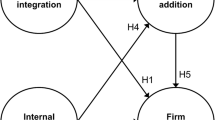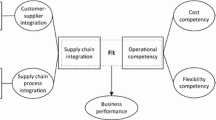Abstract
The results of a major international survey into the relationship between corporate strategy, supply chain strategy and supply chain performance management are reported. Five clearly defined groups are identified: Supply Chain Leaders, Strong and Weak Players, Lagging Players and Non-players. Those business units that report a close link between their supply chain strategy and their supply chain technology, in comparison with those that report a weaker link, displayed a consistent set of characteristics. They rate supply chain strategy as more important for corporate strategy. They have a relatively sophisticated definition of their supply chain strategy. They think their supply chain is more important in achieving competitive advantage, they have invested more in supply chain infrastructure and IT support and they have more formal means of assessing their supply chain performance. There is evidence of inconsistency in the way many businesses relate their supply chain, corporate, and investment strategy.
Similar content being viewed by others
Author information
Authors and Affiliations
Corresponding author
Rights and permissions
About this article
Cite this article
Harrison, A., New, C. The role of coherent supply chain strategy and performance management in achieving competitive advantage: an international survey. J Oper Res Soc 53, 263–271 (2002). https://doi.org/10.1057/palgrave.jors.2601193
Received:
Accepted:
Published:
Issue Date:
DOI: https://doi.org/10.1057/palgrave.jors.2601193




